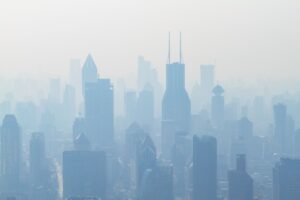Introduction:
Air pollution is a major concern for public health, as it has been closely associated with respiratory illnesses. In this study, researchers from University of Rzeszów, Poland (Jan Gawełko & team) aimed to investigate the relationship between long-term exposure to specific air pollutants and the incidence of squamous cell lung cancer in south-eastern Poland between 2004 and 2014. The pollutants of interest were PM2.5 (fine particulate matter), PM10 (coarse particulate matter), NO2 (nitrogen dioxide), and SO2 (sulfur dioxide). The researchers collected data from 4,237 patients diagnosed with squamous cell lung cancer and their exposure to these pollutants. The study used various statistical methods to analyze the data and understand the potential association between air pollution and the occurrence of lung cancer.
Methods:
To assess the relationship between air pollution and squamous cell lung cancer, the researchers obtained data on 4,237 patients diagnosed with this specific type of lung cancer. They also collected information on the levels of PM2.5, PM10, NO2, and SO2 pollutants in the areas where the patients lived. The researchers used proprietary pollution maps to determine the pollution levels at the patients’ residences.
To analyze the data, the researchers employed several statistical methods, including the risk ratio and various econometric techniques such as the pollution model, inverse distance weighted interpolation, principal components analysis (PCA), and ordered response model. These methods helped to understand the associations between pollutant levels and the incidence of squamous cell lung cancer.
Results:
The study found that the occurrence of squamous cell lung cancer in both men and women seemed to depend on specific combinations of air pollutants. For women, the simultaneous inhalation of NO2 and PM10 (represented as NO2PM10) appeared to have a significant impact on the development of lung cancer. Similarly, for men, the combination of NO2 and SO2 (represented as NO2SO2) seemed to be particularly influential in the occurrence of lung cancer.
The results suggested that nitrogen dioxide (NO2) had a synergistic leading effect when combined with other elements, making it more persistent in explaining higher odds of developing squamous cell lung cancer. In other words, the presence of NO2 in combination with other pollutants could be a significant contributing factor to the development of this type of lung cancer.
Conclusion:
This study highlights the potential link between long-term exposure to air pollution and the incidence of squamous cell lung cancer in south-eastern Poland. Specifically, the simultaneous inhalation of certain air pollutants, such as NO2 and PM10 for women and NO2 and SO2 for men, appears to have a significant impact on the development of lung cancer. Nitrogen dioxide, in particular, seems to play a critical role in this association.
It is crucial to take these findings seriously and continue to monitor and regulate air pollution levels to protect public health. Reducing exposure to air pollutants, especially nitrogen dioxide, can potentially help decrease the incidence of lung cancer and other respiratory illnesses. More research is needed to further understand the mechanisms behind these associations and to explore preventive measures to mitigate the harmful effects of air pollution on human health. Public awareness and efforts to improve air quality are essential steps towards creating a healthier environment for everyone.
Refrence
https://pubmed.ncbi.nlm.nih.gov/36141870/
Photo by Zoya Loonohod on Unsplash






